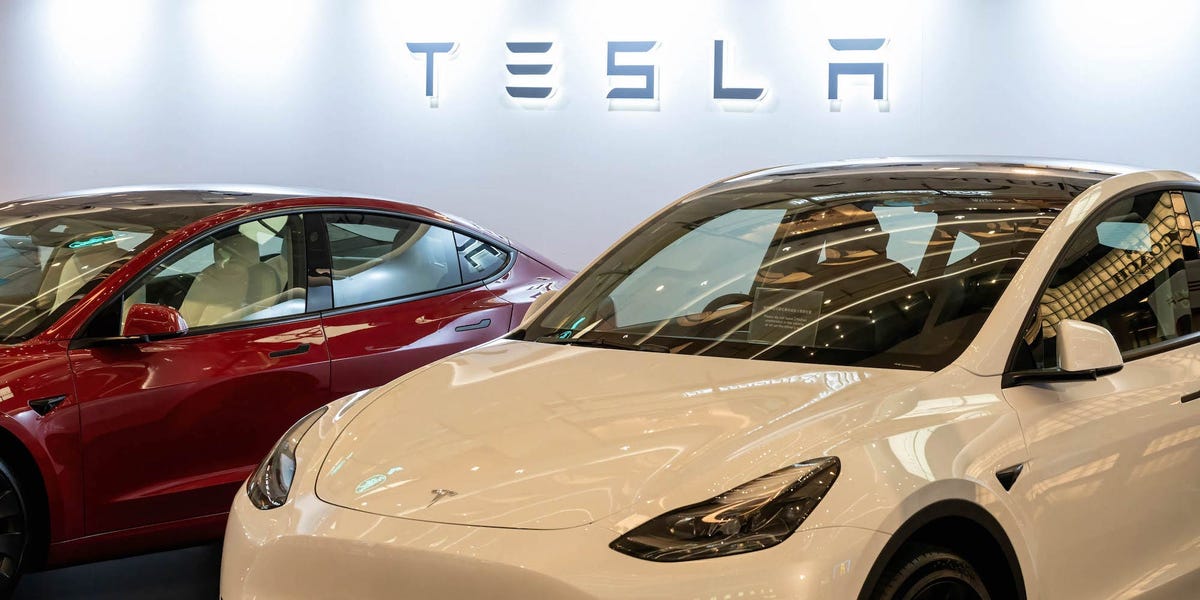Tesla was so swamped with complaints about driving ranges that it created a secret team to cancel owners’ service appointments, source says::To suppress the volume of complaints the automaker created a secret “Diversion Team” in Las Vegas to cancel appointments, Reuters reported.



Driving 120km/h on the highway, upwind, uphill, airco usage all decrease your battery more than driving in ideal conditions.
The WLTP is a scam number because ( the way I see it ) it’s how far your car can drive on a perfectly straight piece of road with a slight breeze from behind in the perfect temperature. Conditions which are never met in real life.
In my old diesel car the usage between 120 and 90 km/h on a highway was neglectable. It’s the difference between 5.5/100km and 5.7l/100km.
Driving 90km/h on a highway vs 120 will probably easily make 100km range difference in a Tesla…
There’s a button on the Tesla where you fan see the estimated range based on your current power usage as well as what you’re losing power too ( acceleration/wind/uphill/… ).
I’m not defending it. It’s just not as straightforward because it depends on more than your petrol car.
Tesla model 3 long-range has a WLTP of ~600km. I think the furthest I’d give it is 450-500 in summer and ~ 400-450 in winter ( on a 100% charge). Normally you’d only charge it to 90% to increase battery lifetime unless you’re going on long trips.
Not to mention the power your car loses just standing on your porch…
It’s a trade-off though. My Volvo XC90 does great on the highway, but gets its range completely destroyed by stop-start traffic in the city.
Whereas my Tesla Model Y’s range seems to actually increase when stuck in traffic or even just driving in the city.
Yeah… EVs are totally built for stop-and-go traffic or city driving. For those uninitiated, everytime you slow down with a ICE car, all that kinetic energy is just being turned into heat on your break pads. Meanwhile for an EV car, that energy is then converted back into electricity to charge the battery - this is the same reason why Hybrids have so much better fuel economy. Adding to that, an ICE engine is only ~30% efficient in converting the energy in gasoline to energy for moving the car (the rest being turned into heat, vibrations, noise) whereas an EV is about ~70-80% efficient. You might not go as far while highway driving an EV, but it took a lot less chemical energy to take you there, meter for meter.
Also the efficiency and torque curve of an electric motor is pretty much flat at all speeds, whilst ICE motors are less efficient at both lower RPM (it’s not even speed, it’s rotations per minute) and higher RPM and there’s a sweet spot somewhere in the middle, whose precise position depends on the motor technology (higher for gas, lower for diesel, for example).
The torque also depends on RPM, which is actually why you have gearboxes and those values are in RPM not speed (as the gearbox alters the RPM to speed ratio, exactly to make up for lower torque at higher RPM).
Along with regenerative breaking as you mentioned, this flatter efficiency curve makes EVs much more efficient in stop-and-go traffic than ICEs whose ideal conditions are to be cruising steadilly at around 2500 RPM (for gas, and it also depends on engine) in the highest gear (so at about 100km/h).
One thing to note is you didn’t notice a range difference based on speed because you’re dealing with larger numbers in terms all around, but you definitely had the same efficiency loss in percent when going faster